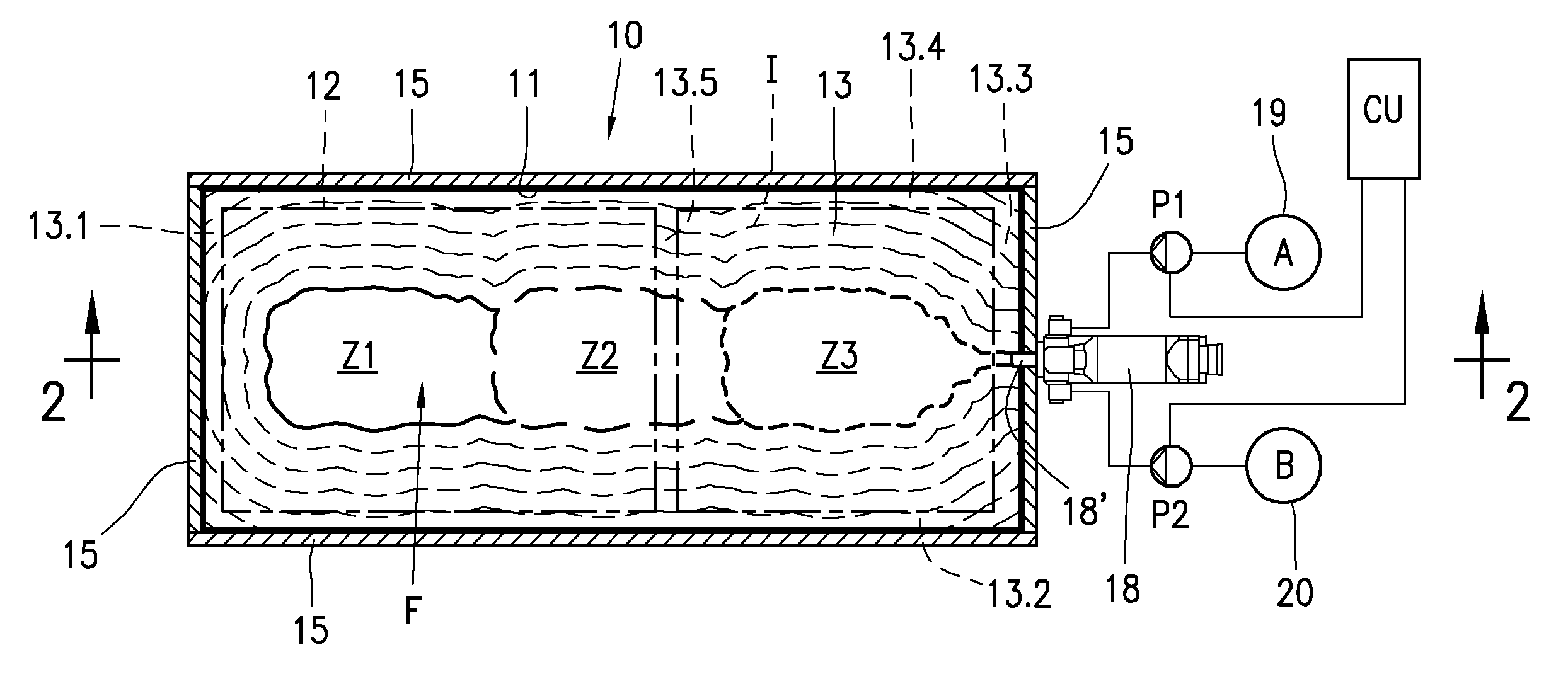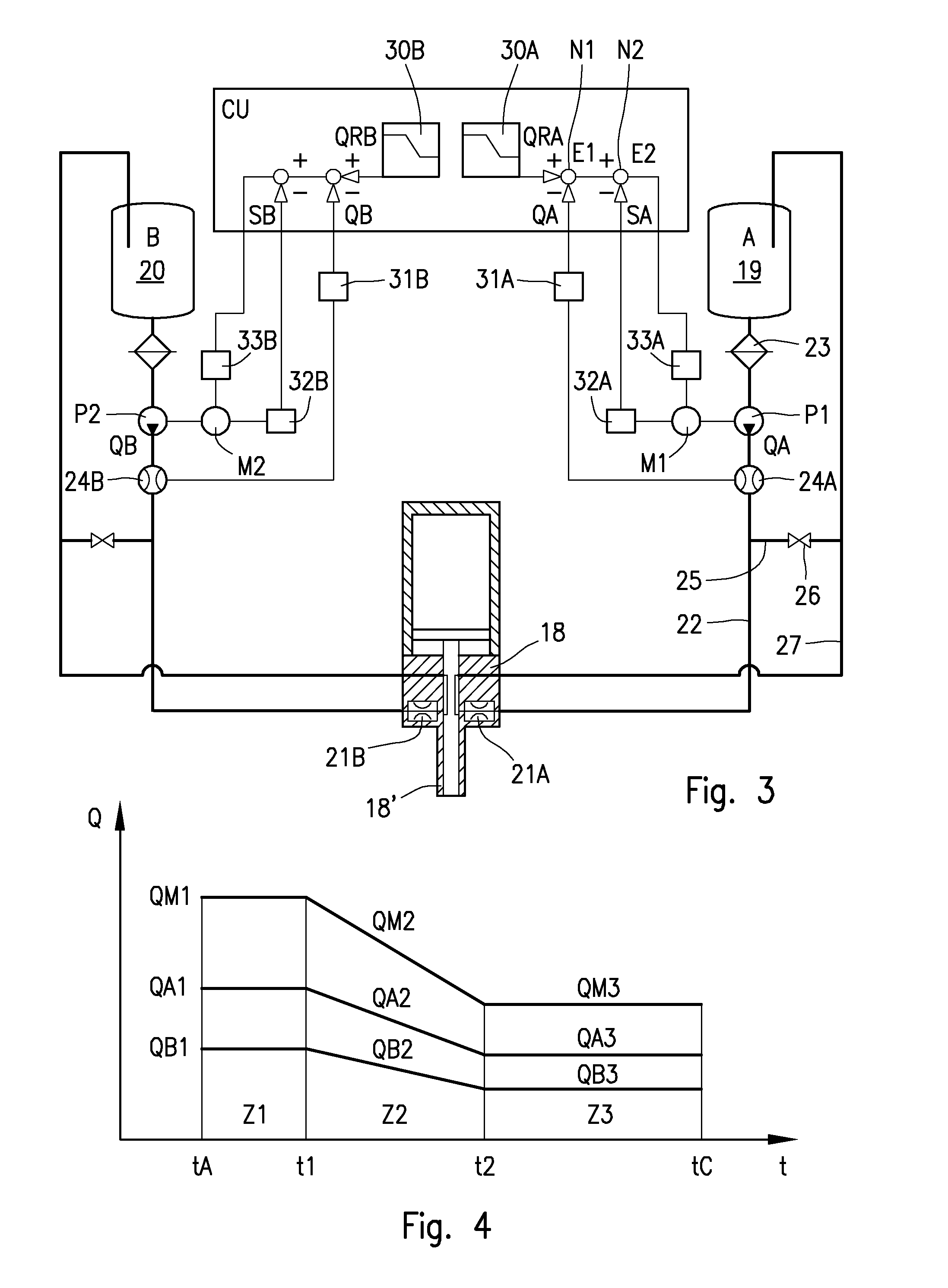Method and apparatus for feeding a polyurethane mixture into hollow bodies
a polyurethane mixture and hollow body technology, applied in the direction of lighting and heating apparatus, cocoa, sweetmeats, etc., can solve the problems of air bubbles, uneven distribution of mixtures, lack of homogeneity in the structure and density of foam, etc., to reduce the consumption of polyurethane materials, short and homogeneous times, and the effect of accelerating the expansion time of foam
- Summary
- Abstract
- Description
- Claims
- Application Information
AI Technical Summary
Benefits of technology
Problems solved by technology
Method used
Image
Examples
Embodiment Construction
[0051]The method and some embodiments of an apparatus according to the invention will be illustrated in greater detail below, with reference to a polyurethane mixture for the production of a thermally insulating foam into the cavity of hollow walls of a domestic refrigerator cabinet; however, what will be stated with reference to the example of FIGS. 1 and 2 is to be intended for foaming of any other hollow body, for example any type of refrigerator cabinet for household or industrial use, freezers, refrigerated windows, or thermally insulating panels for building or for construction of cold-storage cells, or for any other suitable application.
[0052]FIG. 1 shows a cross sectional view of a refrigerator cabinet 10 for household use, comprising two opposite shells, in particular an external shell 11 and an internal shell 12 which, as shown in FIG. 2, in the assembled condition form a cavity in the hollow wall 13 or back wall of the refrigerator cabinet 10, the hollow side walls 13.1, ...
PUM
| Property | Measurement | Unit |
|---|---|---|
| speed | aaaaa | aaaaa |
| speed | aaaaa | aaaaa |
| speed | aaaaa | aaaaa |
Abstract
Description
Claims
Application Information
 Login to View More
Login to View More - R&D
- Intellectual Property
- Life Sciences
- Materials
- Tech Scout
- Unparalleled Data Quality
- Higher Quality Content
- 60% Fewer Hallucinations
Browse by: Latest US Patents, China's latest patents, Technical Efficacy Thesaurus, Application Domain, Technology Topic, Popular Technical Reports.
© 2025 PatSnap. All rights reserved.Legal|Privacy policy|Modern Slavery Act Transparency Statement|Sitemap|About US| Contact US: help@patsnap.com



